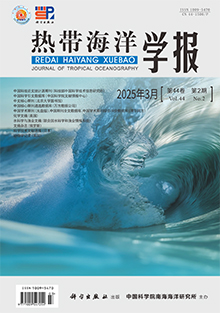The dissolved heavy metals (As, Cd, Cr, Cu, Hg, Pb and Zn) were investigated based on the geochemical analysis of 106 surface seawater samples in the Northern Bay of Hainan Island. Correlation and factor analysis were used to study the sources and main controlling factors of distribution of heavy metals. The pollution levels of heavy metals were evaluated by the factor index and the Nemero index with weight modified. The results indicate that, the average contents of As, Cd, Cu, Hg, Pb and Zn are 0.58, 0.14, 8.68, 0.057, 2.07 and 26.24 μg·L-1, respectively. Additionally, the content of Cr is less than the minimum detection limit. The surface seawater, in the Dongzhai Harbor, east and north coast of the Puqian Bay, estuary of both the Maiya River and the Daomeng River, is with high content of dissolved heavy metals. The estuary of Nandu River, surrounding waters of the Ruyi Island and offshore waters of Haikou Bay are highly clean and non-pollution. The periphery of the Haikou Port, the estuary of the Maya River and the Daomeng River, the top and east coast of the Puqian Bay, and the west side of the Mulan Bay, where the pollution levels are low to medium. The pollution of the Dongzhai Port is moderate to serious. Furthermore, the pollution of the estuary of the Yanfeng River is the most serious. The pollution level of 6 heavy metals were sequenced in the decreased order of Pb> Cu> Zn> Hg> Cd> As. Therefore, Pb, Cu and Zn should be regarded as the key environmental monitoring and marine ecological research objects in the future. The heavy metals in the coastal seawater mainly came from terrestrial and ship pollution, meanwhile, the sources of heavy metals also included atmospheric input, agriculture and aquaculture. Higher salinity and lower pH can promote the desorption and release of heavy metals from suspended particles in seawater. In addition, hydrodynamic condition was also one of the main factors that controlled the heavy metals content in seawater.








